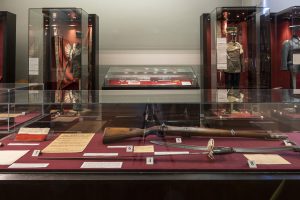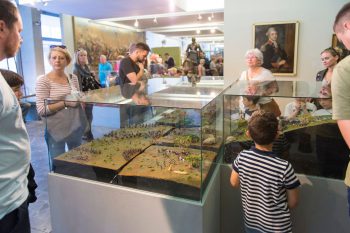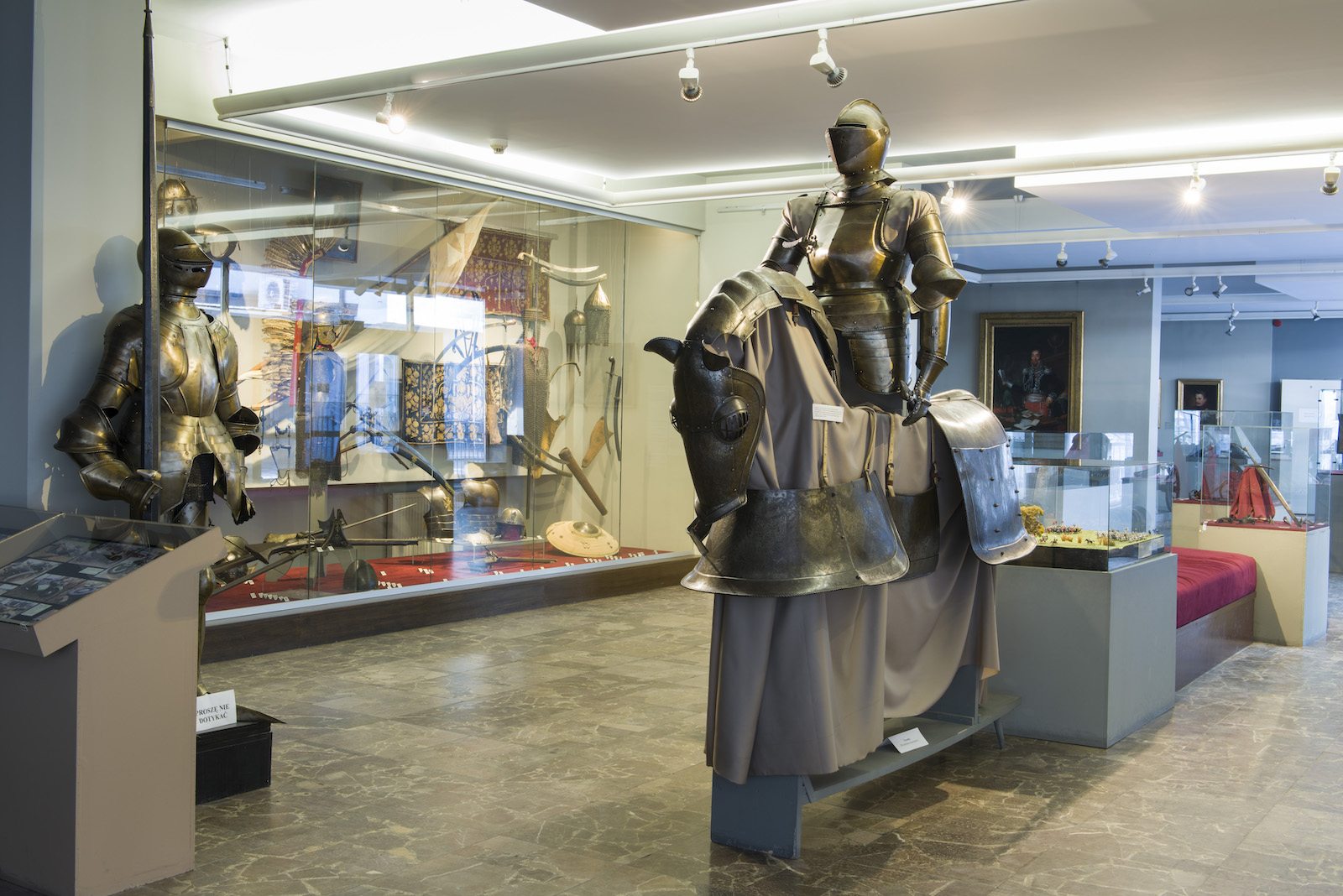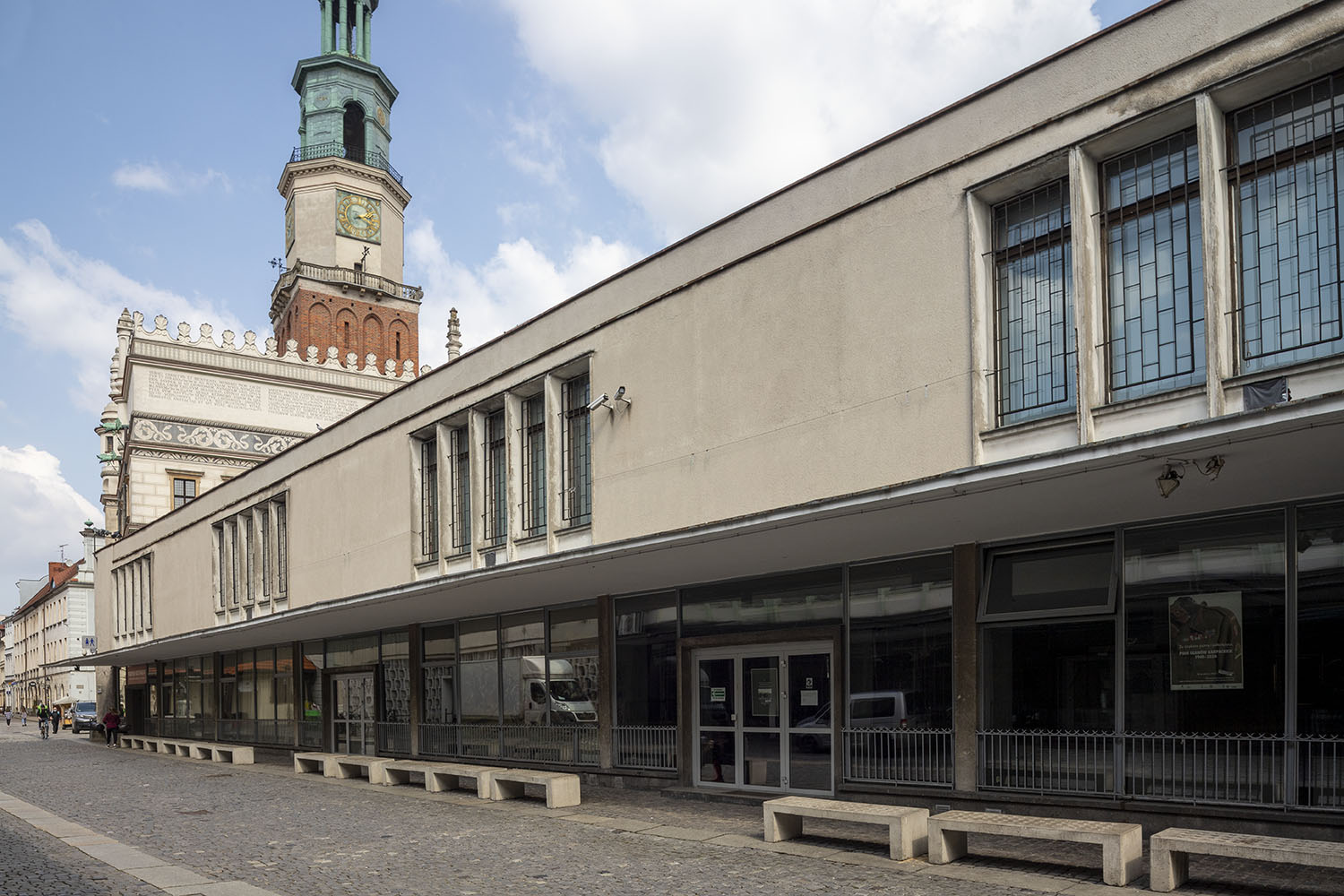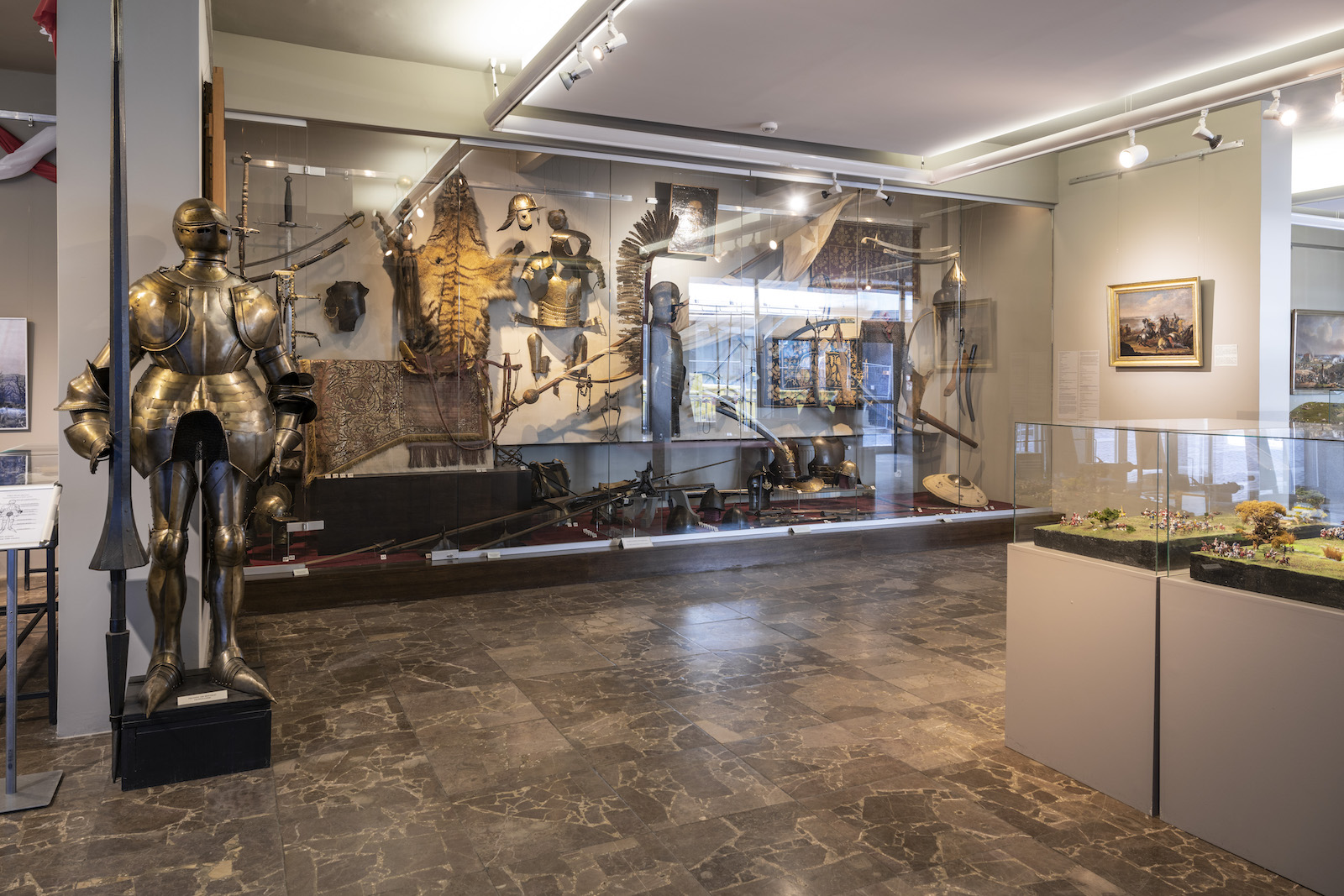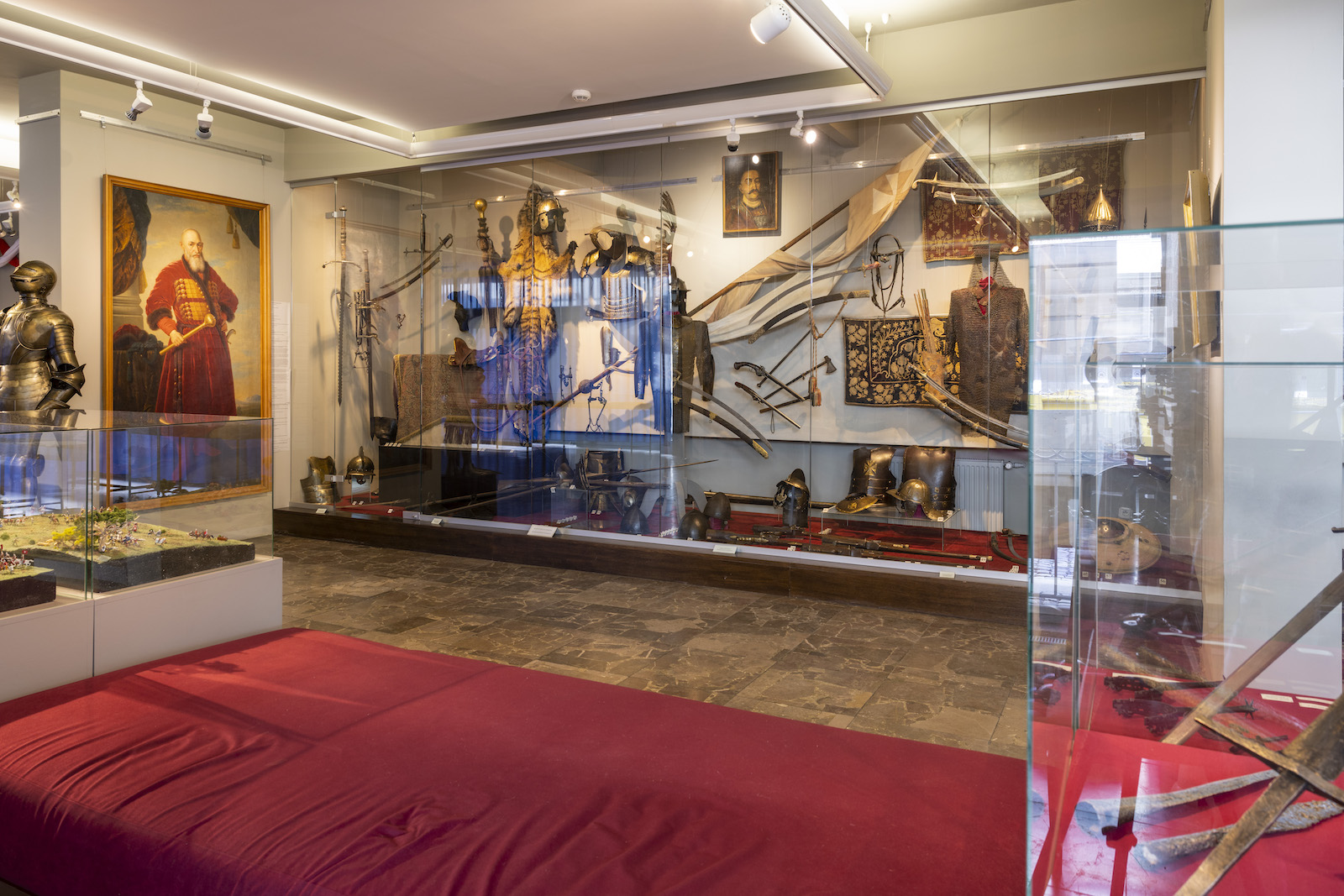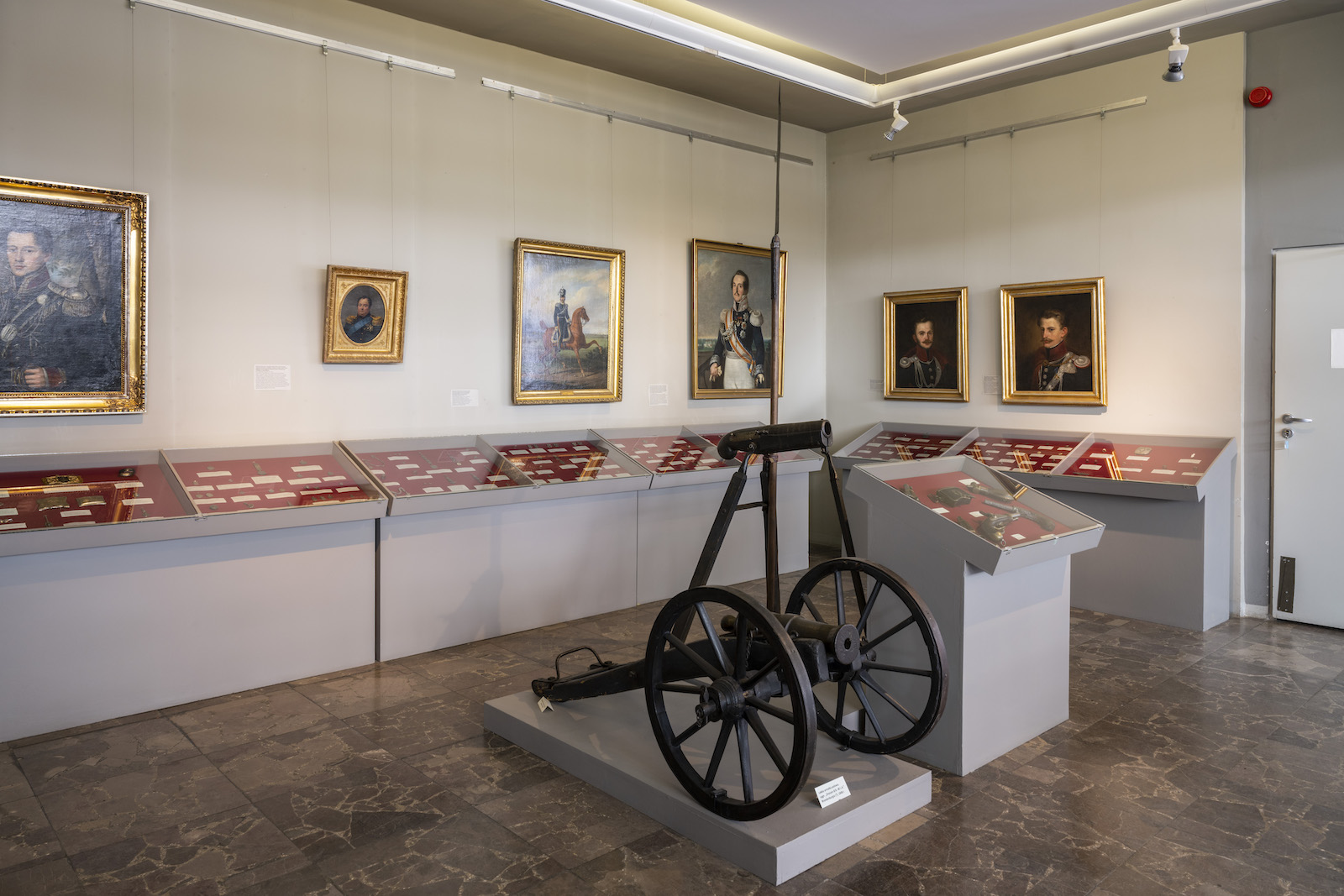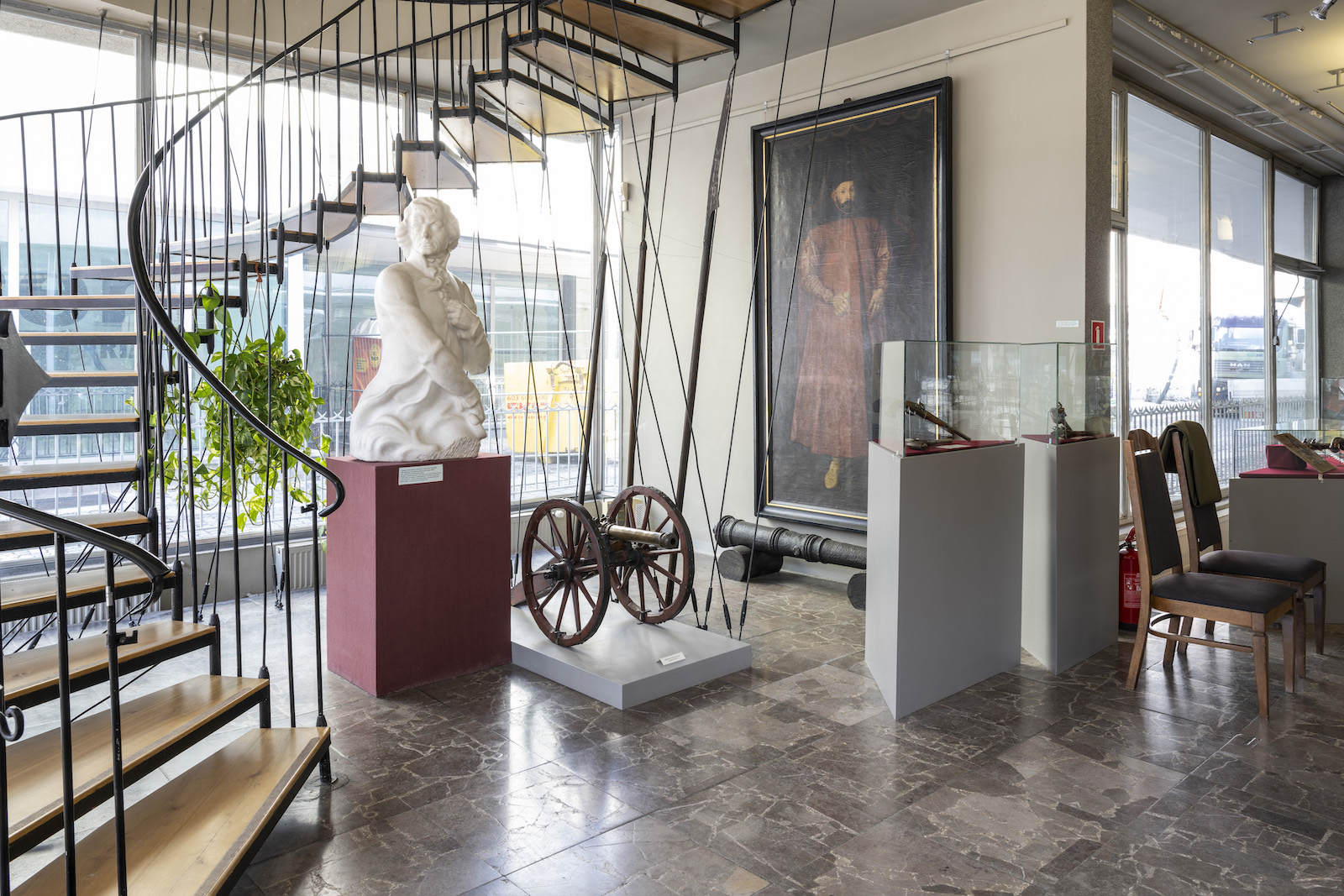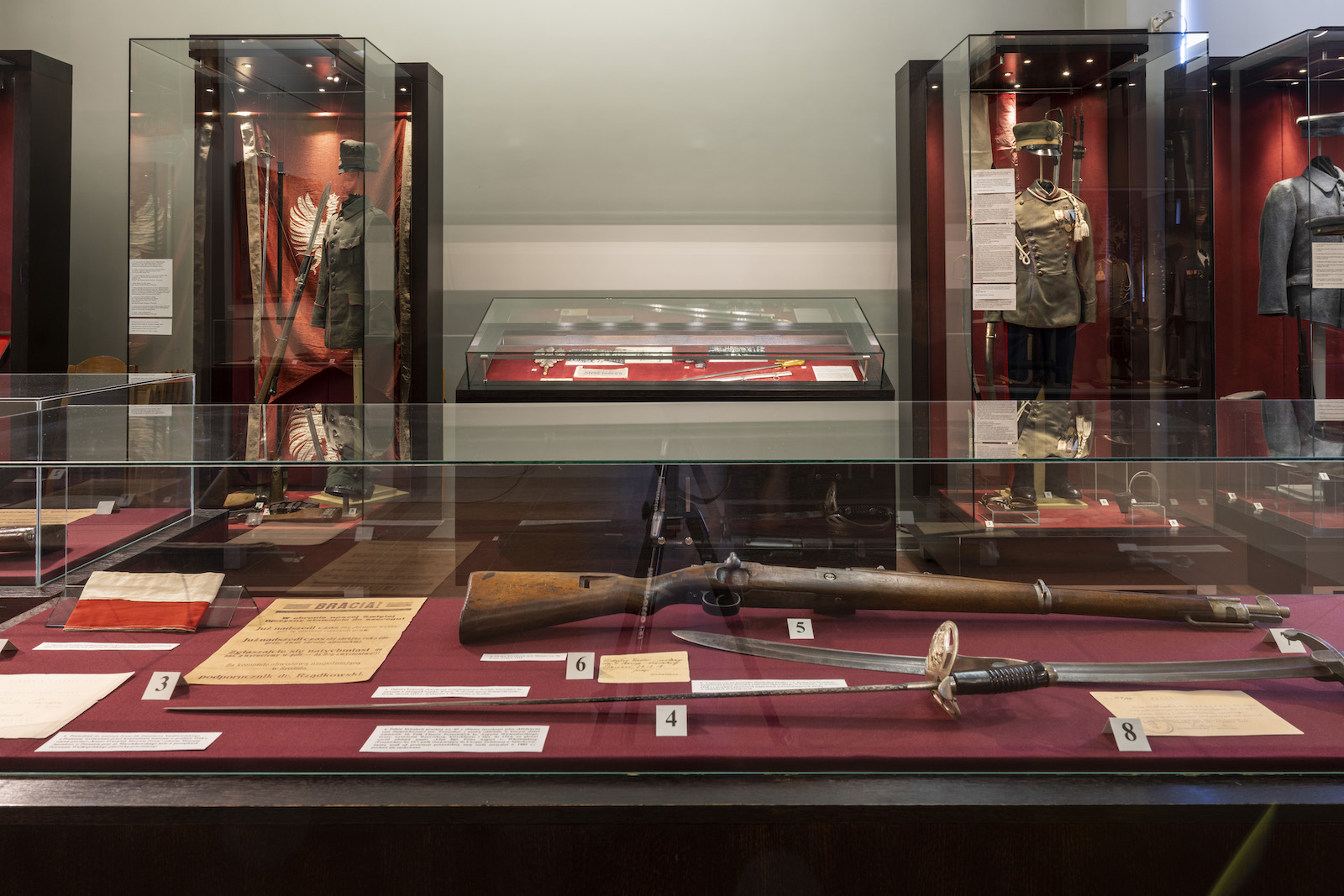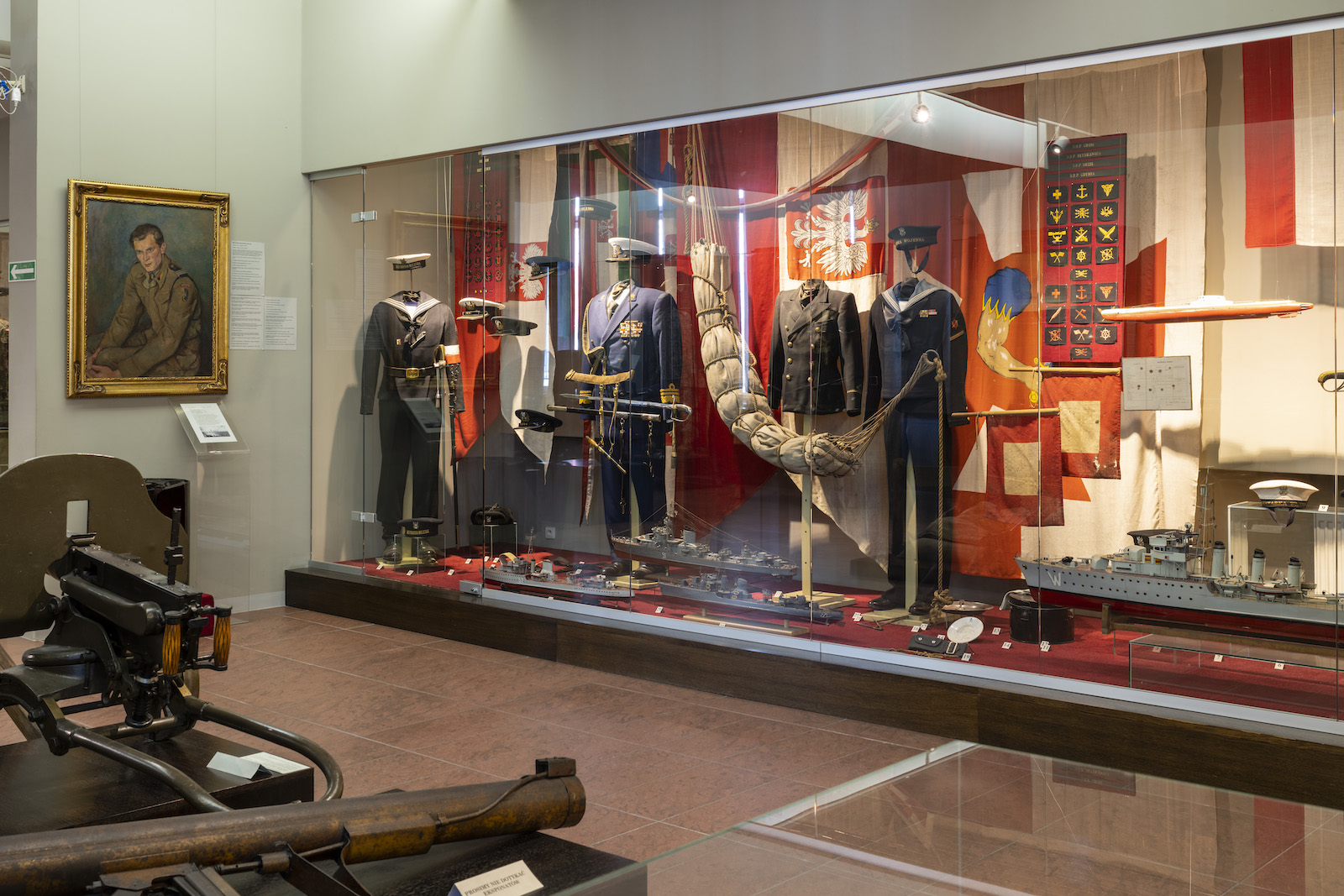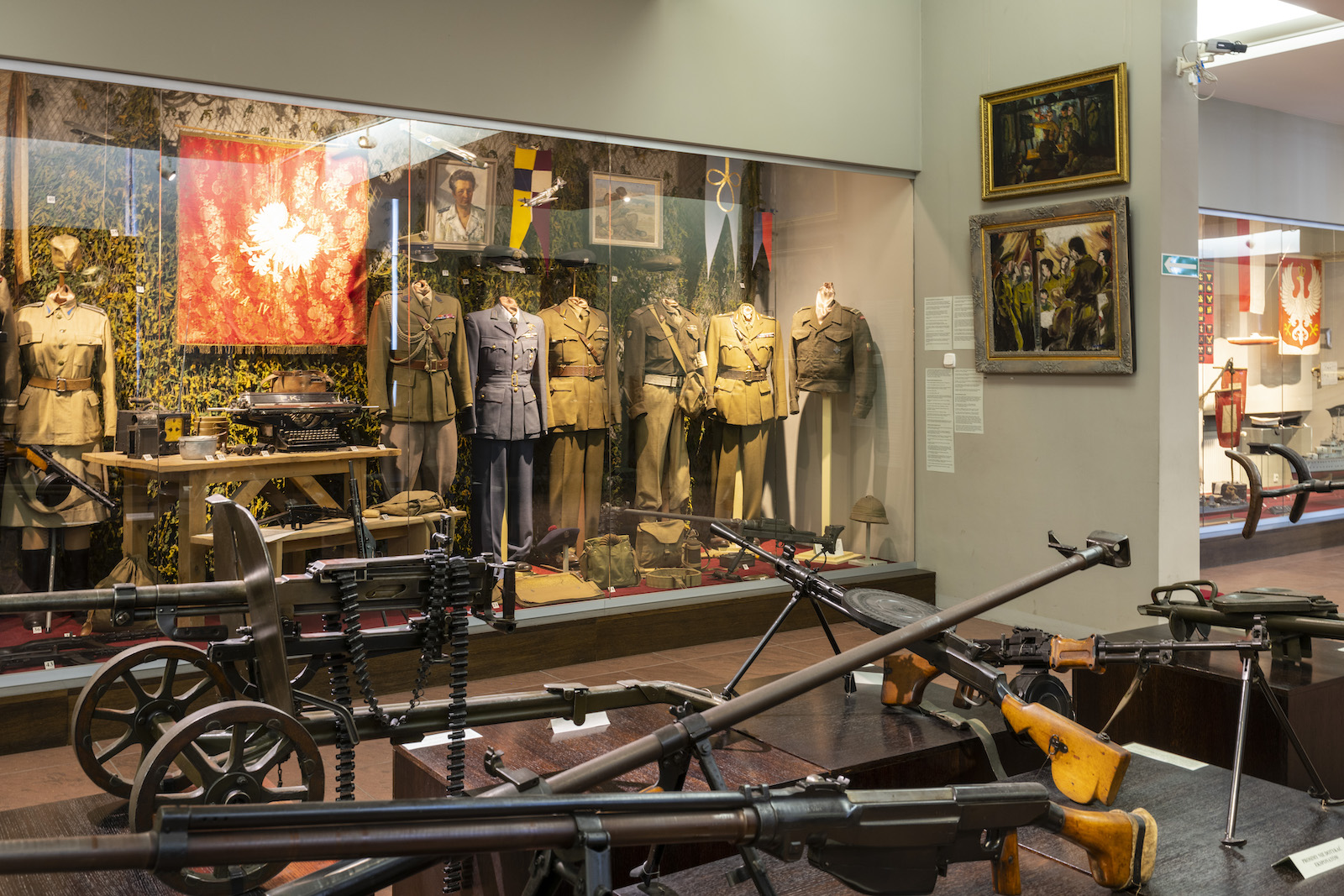The museum is located in the central part of the Old Market, in one of the two pavilions built after the war damages.
The beginnings of the Great Polish Museum of Military are connected to the events of the Great Polish Uprising of 1918-1919. The task of creating a historical-military museum and collecting historical-military mementos was entrusted to the Scientific Section of the General Headquarters by General of the Infantry Józef Dowbor-Muśnicki, the Supreme Commander of the Armed Forces in the former Prussian partition.
In March 1919, the section took over the collections of the Hindenburg Museum, which had been created since 1916 to commemorate the successes of the German arms in World War I. They were located in a temporary location in the annex of the house at Wilhelmstrasse 7 (today Aleja Marcinkowskiego 7).
The opening of the Military Museum by Head of State and Chief Commander Józef Piłsudski on October 27, 1919 was one of the major points of the three-day celebration program marking the union of Greater Poland with other lands of the reborn Polish state.
The museum was made available for sightseeing in December 1920. Difficult local conditions and a steady increase in the number of exhibits caused them to be moved to the Polish Soldier’s Home on the grounds of the 58th Infantry Regiment of Greater Poland at Grunwaldzka Street in Poznań.
At the beginning of 1923, through a decree from the Commander of the 7th Corps District in Poznań, General Division Kazimierz Raszewski, the museum received its own premises in one of the buildings of the Central Ammunition Depot at 1 Artillery Street, at the intersection with Franciszek Ratajczak Street. The opening of the first exhibition on the floor of the building took place on April 22, 1923. It was conducted by Gen. K. Raszewski and consecrated by the Primate of Poland, Cardinal Edmund Dalbor. At the time, the museum’s director was a military official of the 8th rank, Antoni Liske. The opening of the next part, the so-called outdoor exhibition of weapons and military equipment on the ground floor of the building, took place in December 1923, on the fifth anniversary of the Greater Poland Uprising of 1918-1919.
Changes in the exhibition, especially on the second floor, took place after the eminent Poznan sculptor Władysław Marcinkowski assumed the role of director of the museum at the beginning of 1926. On the second floor, temporary exhibitions began to be organized. Cooperation with the Museum of Greater Poland was established and in 1926 the Poznan Society of Friends of Science’s collections of military artifacts were taken over. Publishing activities were also undertaken.
Until 1939, the Great Poland Military Museum was a place for the education of Polish Army soldiers, for civilian trips, and for individual visits. It was one of two military and historical museums of the interwar period (the other being the Warsaw Military Museum, established on April 22, 1920).
Due to the threat of war, the evacuation of the most valuable exhibits took place on September 1, 1939. Since the museum was closed down by the German occupying forces, some of the exhibits were transported to museums in Berlin, Leipzig, Nuremberg and Vienna. The remaining exhibits, especially those related to Polish military, were destroyed.
Attempts to restore the museum in the post-war reality proved to be unsuccessful. Another initiative in this regard was taken by the artist painter Stefan Pajączkowski, who in December 1956 proposed the restoration of a military museum. He gained the favor of the then director of the National Museum in Poznan, and later of the central civilian and military authorities.
The Presidency of the National Council of the City of Poznań was acquired in July 1962 a modern building in the middle of the Old Market in Poznań. The first exhibition was organized based on the collection of military items belonging to the National Museum in Poznań and the deposit of the Polish Army Museum in Warsaw.
On the 22nd of February 1963, the former Commander of the Operational Aviation, General Brigadier Pilot Jan Raczkowski, opened the new facility ceremonially in the presence of the Director of the National Museum in Poznań, Professor Zdzisław Kępiński, as well as representatives of the civil and military authorities. The new facility was opened under the name of Museum of the Army, later renamed as Museum of Weapons and by the ordinance of the Minister of Culture and Art from the 16th of July 1966, it was approved as the Branch of the National Museum in Poznań and its historical name was restored – Greater Poland Military Museum.
The permanent exhibition of the museum presented the history of Polish and foreign arms in chronological order. On the ground floor from the beginnings of Polish statehood to the end of the 18th century. On the first floor the period of national uprisings and Polish military of the 20th century. This arrangement has survived, with changes, up to the present day. In addition to the permanent exhibition of the museum, temporary exhibitions were organized and are still organized in the first part of the building’s ground floor, and occasional shows in other available and related to the permanent exhibition places. From 1973 to 2012 the museum was headed by Tadeusz Jeziorowski. His work is continued by Jarosław Łuczak.
In the post-war period of the restored museum’s activity, several tens of thousands of exhibits were collected, mainly from former soldiers, their families and collectors. Exhibition activities are continued, scientific and publishing activities are carried out, and there is also a wide educational offer.
The museum’s permanent exhibition presents white weapons, firearms, protective equipment, military symbols, uniforms and equipment from the 10th to the 21st century. It is adorned with battle paintings, including the largest and most spectacular fragment of the panorama “Battle of the Pyramids” by Wojciech Kossak from 1901. It is one of the few objects that have survived from the pre-war museum collections. The collection’s pride is the bechter (a type of armor) of the city’s captain from 1580, decorated with the city of Poznań’s coat of arms on the shoulder strap.
For recognition, the largest collection of museums in the country concerning the Greater Poland Uprising of 1918-1919 and the Greater Poland Army, from which the Greater Poland Military Museum traces its lineage, deserves special mention.



